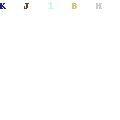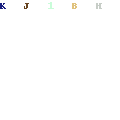 Before any program here at Rx EDGE can really get off the ground running, one of the first things we have to do is establish the brand’s targeting parameters. Where are the Solutions at the Shelf™ dispensers going to be placed? In what geographic areas? In what retailers? In what stores? In what store sections?
Before any program here at Rx EDGE can really get off the ground running, one of the first things we have to do is establish the brand’s targeting parameters. Where are the Solutions at the Shelf™ dispensers going to be placed? In what geographic areas? In what retailers? In what stores? In what store sections?
All of these questions need to be addressed since targeting is one of the most important aspects of any media planning process. I cannot tell you how many iterations of store lists I can go through before we determine the optimal strategy for a brand. It can be a real science when it comes down to it. Multiple factors are involved; I will expand upon some of them here.
DMA Targeting
Many brands use Designated Market Areas (DMAs) to fine-tune their targeting decisions. DMAs are standardized areas in the country where consumers receive the same or similar exposure to television, radio, and other media offerings. DMAs are essential to brand marketers because they increase the likelihood that potential patients will be exposed to consistent messages throughout the media mix in a particular geographic region. Typically the highly populated metropolitan areas, like New York for example, are selected due to the large audience base found there.
Retailer Selection
Top chain retail pharmacies (as defined by Rx volume) are typically included in a program, or at least considered initially, since they can deliver a large audience of potential patients. However, building-in independent pharmacies and other channels to the store list (such as smaller drug chains and supermarkets) helps to insure optimal coverage.
Other elements can factor into retailer selection. For example, not all pharmacies will stock a given product. If a retailer does not offer the brand in their stores, then that certainly eliminates them from targeting consideration.
Next comes deciding upon specific stores within a chain. The previous process of DMA selection helps, but that is not all that goes into store selection. Often, high Rx volume stores are sought out, as it is more likely a prescription will be written in these stores. While not important for every brand, the presence of clinics is another criteria.
Store Section
Lastly, there is the store section to think about. After the geographic areas, retailers and stores are selected, the next step is to decide upon the shelf placement for the Solutions at the Shelf information dispenser itself. For many brands this is fairly intuitive, especially if there is an OTC corollary product. A dry eye care prescription product, for example, would ideally want to be in close proximity to the artificial tears section since such products may be a consumer’s first choice when symptoms arise.
However, not all prescription drugs have an OTC counterpart. For situations like this, specifics such as store traffic, audience make-up, or comorbidity diseases associated with the condition are taken into consideration. An example would be the ADHD category. An ADHD brand might choose the pediatric Cold/Cough aisle because mom shoppers can be reached there. Analgesics would be another option, as this is one of the most frequently shopped aisles within a store.
Additional Considerations
- Brand budget which can affect the total number of stores in a program.
- Category exclusivity within a store.
- Adequate number of test and control stores to support accurate matched-panel analysis.
When it is all said and done, a multitude of techniques are used in combination to determine where the most likely prospective patient audience can be found. The ultimate goal is to create an optimally-targeted and successful program. It’s science in the pharmacy-channel world; it’s the science of effective targeting.


